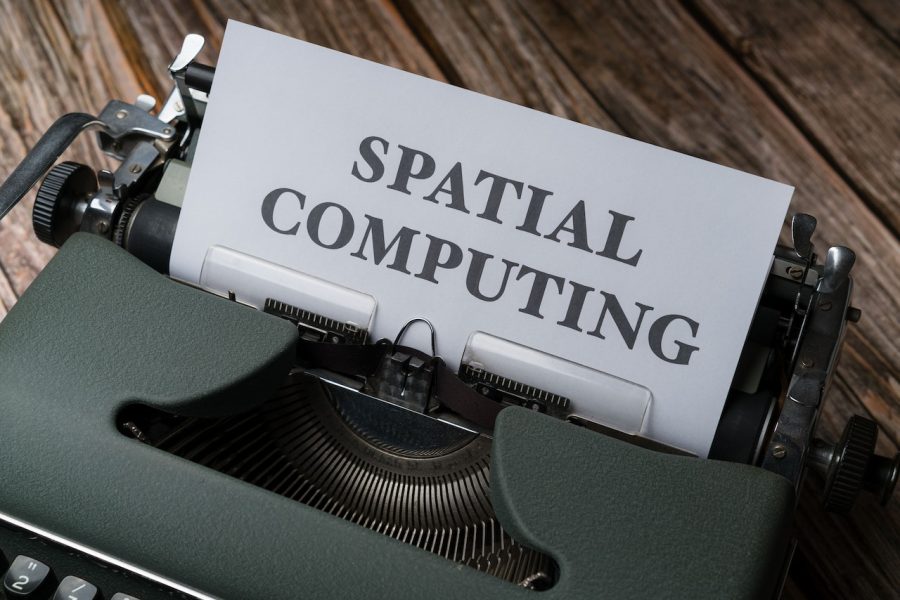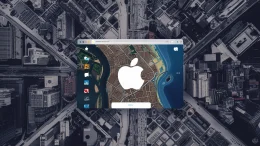Spatial computing is not merely a technological evolution; it is a paradigm shift heralding a new era in human interaction and experience. As we immerse ourselves in this digital age, we encounter not only augmented realities but also the promise of a future where the boundaries between the virtual and the physical become increasingly fluid. Standing at this transformative juncture, it is both exciting and imperative to explore the vast potential spatial computing holds and understand the profound ramifications it will have on every facet of our daily lives.
The Meteoric Rise of AR/VR
In the vast technological innovation landscape, few sectors have experienced the stratospheric growth witnessed by the AR/VR B2C segment. The meteoric rise of augmented and virtual reality applications is not just a testament to its popularity; it underscores the fundamental shift in how consumers perceive, interact with, and immerse themselves in digital worlds.
Statistics paint a vivid picture of this trajectory, spotlighting a leap from a robust $31.12 billion in 2023 to an eye-watering $52.05 billion projection by 2027. This 67% growth over a mere four-year span is not just about numbers. It encapsulates the burgeoning enthusiasm, market demand, and the potential these technologies hold in revolutionizing experiences across sectors—from entertainment and gaming to education and healthcare.
The Spectrum of Spatial Computing
Spatial computing presents a rich tapestry of experiences that blur the boundaries between our physical environment and digital overlays. This spectrum is vast at its core, encapsulating various shades of reality.
Starting with our raw, unfiltered surroundings, we have what is simply termed “Reality.” This is the world as we know it, untouched and unaffected by any digital influence. It is the foundation upon which the other layers of spatial computing rest.
Next in line is “Augmented Reality” or AR. AR does not replace our world; it enhances it. Imagine walking through a city and seeing historical information pop up as you approach a monument or perhaps visualizing a piece of furniture in your living room before making a purchase. Tools such as Lumus’ Z-Lens or Elbit’s Everysight represent this evolution, enriching our vision by merging AR with everyday needs like prescription eyewear.
“Mixed Reality” (MR) takes this a step further. In this realm, the lines between the physical and digital worlds are not just blurred but intertwined. Digital entities are not just passive overlays; they interact and respond to our physical world. Products like Apple Vision Pro exemplify this, allowing users to see digital content that not just overlays but actively blends and interacts with their physical surroundings.
The spectrum culminates in “Virtual Reality” (VR). A complete immersion into a digital universe, VR offers escapism at its finest. Every sight, sound, and sometimes even touch is artificially generated. Meta Quest 2 stands as a testament to this immersive experience, plunging users into environments where every element is a construct of digital design.
As we continue to traverse this spectrum, it becomes clear that spatial computing is not just about tech or fancy gadgets. It is about reshaping the fabric of our experiences, merging the tangible with the intangible, and crafting a future where our imaginations only limit our realities.
Redefining Work in the Age of Spatial Computing
The transformative potential of spatial computing stands at the forefront of a new work paradigm. Envision a reality where international boundaries blur, making way for holographic business conferences conducted from the remotest parts of our planet. Or consider the potent efficiency brought by mixed reality, enhancing collaborative design processes and project visualizations. A standout example of this transformative power lies in the production domain: BAE factory workers, empowered by AR, have dramatically reduced their manual building time by an impressive 40%.
This is not merely about technological marvels but crafting a workspace without traditional limitations. As spatial computing evolves, the need for physical tools like keyboards or displays diminishes, pointing towards a future that champions adaptability, connectivity, and remote operational freedom.
The Evolution of Play in a Spatial Era
Entertainment, a realm ever-fluid and evolving, finds itself on the cusp of another significant metamorphosis, courtesy of spatial computing. The gaming universe, especially within the burgeoning metaverse, is being reshaped. Titles such as Espire 2 and the globally beloved Pokémon GO are not just games but experiences, drawing players into realms of uncharted immersion.
However, the revolution is not confined to gaming alone. Fashion and cutting-edge tech are birthing innovations like Marga Weiman’s Hyperfabric Dress. Such integrations signal a future where one’s attire is not just a style statement but an interactive extension of oneself.
Complementing these visual revolutions are strides in spatial audio. These are not mere advancements but reinventions, promising listeners and players auditory journeys that are as rich and layered as real-life symphonies.
Elevating Education
In the realm of learning, spatial computing stands as a game-changer. It offers opportunities for enriched interactive learning, allowing students to virtually visit historical eras or distant landmarks. The very act of notetaking evolves, with students jotting down points in the digital realm and accessing them effortlessly.
A New Era in Healthcare
The healthcare domain witnesses profound transformations with spatial computing. As seen with Augmedics, surgical outcomes improve, which overlays anatomically accurate spinal placements. The ability to monitor and diagnose in real-time, coupled with AR-assisted procedures, heralds a new age of medical precision and patient care.
The Future Landscape
While smartphones have been ubiquitous, their reign may be waning. The global smartphone market dipped by 14% in 2023, while AR glasses witnessed a 45% surge in sales. This shift signals a future where near-to-eye displays become our primary interface.
Inside the Magic: The Tech Behind AR Glasses
Delving into the realm of AR glasses, the magic lies in the enhanced visuals they provide and the intricate engineering underpinning them. Central to this innovation is Waveguide Technology, a marvel that transforms how we view the digital and the real convergence. The Reflective Waveguide, equipped with its unique embedded facets, paves the way for colors to coexist within the same waveguide, thus granting users an expansive 80-degree field of vision and altering how we perceive augmented overlays.
Conversely, the Diffractive Waveguide, in its bid to provide a richer, layered experience, utilizes multiple waveguides. While this adds depth and dimension, it also demands a greater energy output. Powering these intricate waveguides are micro-displays, harnessing innovative OLED and Laser technologies. These not only serve as the engines propelling the visuals but are the alchemists, transforming data into the mesmerizing virtual images that redefine our realities.
Embracing a World Transformed by Spatial Computing
As we peer into the horizon of what the future holds, the imprint of spatial computing is unmistakable. It is not just about a technological transition; it signifies an evolution in the human experience itself. How we perceive our surroundings, communicate with one another, and engage with digital and physical environments are undergoing profound shifts.
Spatial computing opens a gateway to new modalities of interaction, merging our senses with intricate layers of digital augmentation. Gone are the days when technology and reality were siloed entities. In this evolving paradigm, they entwine seamlessly, offering a symphony of experiences previously thought impossible.
But as with any technological evolution, spatial computing presents its set of challenges. The ethical implications, potential over-reliance, and security concerns must be addressed with foresight and care. While we marvel at the opportunities it presents, navigating its complexities with discernment is equally crucial.
What is clear, however, is that we are on the cusp of a transformative era. As the insights from Lumus elucidate, the wave of spatial computing is not just coming; it is already here. As we step into this brave new world, we must approach it with both excitement and responsibility, ensuring that our foray into augmented realities enriches the human experience, making it more profound, connected, and meaningful.
Featured Image Credit: Markus Winkler; Pexels; Thank you!

















